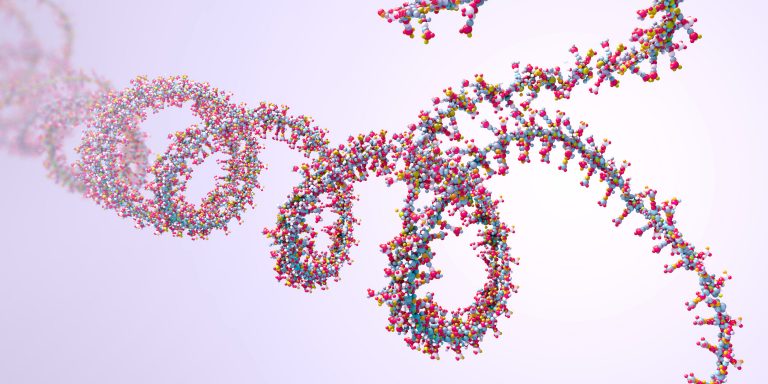
A new method of RNA sequencing called Panoramic RNA Display by Overcoming RNA Modification Aborted Sequencing (PANDORA) may provide provide greater insight to RNA’s role in disease development as it can help discover numerous modified small RNAs that were previously undetectable.
The researchers who developed the method from the University of California, Riverside (UCR), have published their method and findings in the journal Nature Cell Biology in a paper titled, “PANDORA-seq expands the repertoire of regulatory small RNAs by overcoming RNA modifications.”
“Although high-throughput RNA sequencing (RNA-seq) has greatly advanced small non-coding RNA (sncRNA) discovery, the currently widely used complementary DNA library construction protocol generates biased sequencing results,” wrote the researchers. “This is partially due to RNA modifications that interfere with adapter ligation and reverse transcription processes, which prevent the detection of sncRNAs bearing these modifications. Here, we present PANDORA-seq (panoramic RNA display by overcoming RNA modification aborted sequencing), employing a combinatorial enzymatic treatment to remove key RNA modifications that block adapter ligation and reverse transcription.”
RNA-Seq provides researchers with visibility into previously undetected changes occurring in disease states, in response to therapeutics, under different environmental conditions, and across a broad range of other study designs. The researchers claim their new method, PANDORA-seq, uncovers a surprising small-RNA landscape that is dominated by tsRNAs and rRNA-derived small RNAs, or rsRNAs, rather than microRNAs, which were previously believed to dominate many mammalian tissues and cells.
“PANDORA-seq can be widely used to profile small RNA landscapes in various physiological and disease conditions to facilitate the discovery of key regulatory small RNAs involved in these conditions,” explained Qi Chen, PhD, an assistant professor of biomedical sciences in the UCR School of Medicine, who led the study. “Modified small RNAs wear an ‘invisibility cloak’ that prevents them from being detected by traditional RNA-sequencing methods. How many such modified RNAs are there? What is the origin of their sequences? And what exactly is their biological function? These are questions PANDORA-seq may be able to answer.”
PANDORA-seq employs a stepwise enzymatic treatment to remove key RNA modifications. The new method identified modified sncRNAs—mostly transfer RNA-derived small RNAs (tsRNAs) and ribosomal RNA-derived small RNAs (rsRNAs)—that were previously undetected, exhibiting tissue-specific expression across mouse brain, liver, spleen, and sperm, as well as cell-specific expression across embryonic stem cells (ESCs) and HeLa cells. “Using PANDORA-seq, we revealed unprecedented landscapes of microRNA, tsRNA, and rsRNA dynamics during the generation of induced pluripotent stem cells,” wrote the researchers.
“PANDORA-seq has opened Pandora’s box of small RNAs,” said Tong Zhou, PhD, a bioinformatician at the University of Nevada, Reno School of Medicine and a co-corresponding author of the study. “We can now dance with these once invisible partners in the RNA ballroom.”
“With PANDORA-seq, we found unprecedented microRNA/tsRNA/rsRNA dynamics when somatic cells are reprogrammed to induced pluripotent stem cells, which are generated by adult cells and have properties similar to those of embryonic stem cells, making them capable of differentiating into all cell types of the body,” added Sihem Cheloufi, PhD, an assistant professor of biochemistry at UCR and a co-corresponding author of the paper. “Some tsRNAs and rsRNAs can impact protein synthesis and even affect embryonic stem cell lineage differentiation in embryonic stem cells.”
The researchers are now determined to understand how tsRNA/rsRNA are generated, how they function in stem cells, and how they orchestrate cell fate decisions during development.
When Chen was developing PANDORA-seq, he was reminded of the parable of the blind men and the elephant, which teaches truth is only revealed when various parts come together.
“We sometimes forget the big picture, being focused on just a small part of it,” he explained. “Perhaps the only way to arrive at total truth—the big picture—is to push against our boundary of knowledge and confirm the revealed truth with newly devised technology.”
“It is fascinating to observe down the lenses of a microscope in the lab the profound cell fate change during cellular reprogramming and differentiation,” said Reuben Franklin, a doctoral student in Cheloufi’s lab and a co-author on the study. “But PANDORA-seq allows us to eavesdrop on the molecular players during these processes.”










